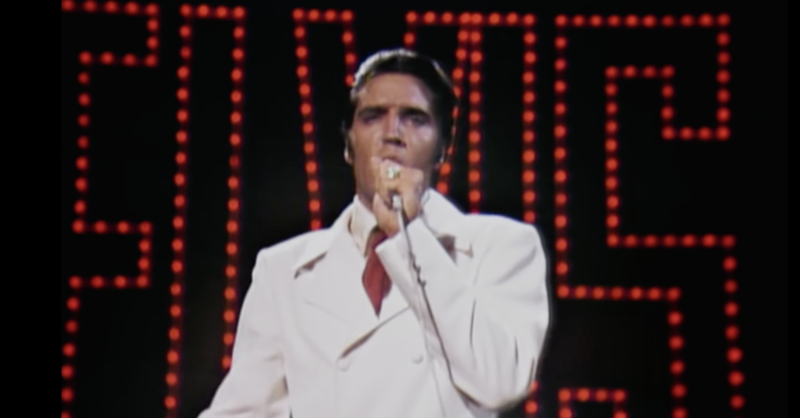
Hymns possess a timeless beauty that connects people across the ages and around the world. Their powerful and relatable lyrics infuse our souls with hope and joy while their soothing melodies inspire comfort. Knowing those same words touched others long ago and are impacting those around us helps us remember that we’re not alone in our joys, sorrows, and struggles. For many of us, these classic songs bring a sense of nostalgia that joins our past to our present.
One of my most treasured memories of growing up in a conservative church is singing acapella hymns in the sanctuary every Sunday. I learned to harmonize by listening to my mom and following the hymnal notes. As a teenager, my mom and I sang these songs at home, her on her autoharp or harpsichord and me on my guitar. Since then, I’ve attended numerous churches of various denominations in the U.S. and abroad. I’ve heard hymns sung in Navajo, Spanish, and Mandarin. In each context, the songs lifted my spirit in praise to God and gave me a greater sense of connection and community to those around me.
“How Great Thou Art” has always been my favorite hymn. It’s one of the most popular in the U.S. and its development is as impressive as its impact.
Here are ten incredible facts about “How Great Thou Art”:
Photo Credit: ©Zack Smith/Unsplash

1. It Began with a Thunderstorm in Sweden
In 1885, Carl Boberg, a sailor-turned-preacher, was walking home with friends from a church service along the coast. It was a calm and perfect day. The sun shone brightly and birds sang sweetly in the trees.
All of a sudden, a fierce storm rolled in. With lightning flashing and wind whipping through their hair, Carl and his friends ran for shelter. The tempest was powerful but short-lived. When it was over, the birds resumed singing, and a beautiful rainbow stretched across the clear sky.
Carl fell to his knees and praised God for His strength and beauty.
2. It Was a Poem Later Put to Music without the Writer's Knowledge
When Carl arrived home, he ran inside and opened a window. Church bells rang out across the land and sea, playing the tune of a melodic hymn. After listening for a moment, he sat at his desk, took out some paper, and wrote a poem called, “O Store Gud” (O Great God). In English, the first line was, “O great God, when I behold the wonder.”
Carl published his poem in a local newspaper. It’s doubtful he could have imagined the journey and impact of his work.
Unbeknownst to Boberg, someone else in Sweden read his poem in that newspaper and put it to the tune of a well-known Swedish folk song. This unknown person then shared it with his church. They enjoyed the new song so much that they began singing and sharing it with other congregations.
Several years later, Carl attended a church meeting in another province. He was surprised when they began to sing his poem. When he realized how popular it was, Carl published it again, this time with the music, in a newspaper he created.
Photo Credit: ©GettyImages/Trifonov_Evgeniy

3. Early Versions Were Translated into Three Languages and Introduced in Five Countries
The words Boberg wrote are different from the lyrics in most hymnals now. While the songwriter went on to become an editor, an important preacher, and a member of the Swedish Parliament, the song took its own journey.
Early versions were translated into German, English, and Russian. In addition to Sweden, the hymn was introduced in Germany, the United States (not the version we now have), Poland, and Ukraine.
In 1907, Manfred von Glehn translated “O Store Gud” into German, and called it “Wie gross Bist Du” (How Large Are You).
In 1925, Reverend E. Gustav Johnson, a pastor in Chicago, Illinois, translated it into English and called it “O Mighty God, When I Behold the Wonder.” Some hymnals still include Johnson’s version.
In 1927, Christian leader I. S. Prokhanoff translated the German version into Russian and published it in a Baptist song collection in Poland.
A church in Ukraine found the Russian translation and shared it with others. In 1933, two Ukrainian Christians sang the song for British missionaries Reverend Stuart K. Hine and his wife, Mercy.
4. The Version We Have Now Was Inspired by the Carpathian Mountains
In 1934, Stuart and Mercy embarked upon a bicycle missionary journey through the Carpathian Mountains. The beauty of those lofty mountains brought the hymn to mind. Instead of just singing it, the Hines added their own English words. The wonders of nature and their amazing experiences sharing the gospel with local villagers inspired the first three verses of the hymn’s current version.
Photo Credit: ©iStock/Getty Images Plus/brizmaker

5. The Fourth Verse Was Written in Britain After WWII
In 1939, due to the start of World War II, the Hines returned to Britain. Stuart crafted his own arrangement of the Swedish melody and shared it as he ministered in his home country throughout those tumultuous years. When the war ended, Stuart wrote the fourth and final verse and renamed the song, “How Great Thou Art.”
6. Today's Version Was Introduced to Over a Dozen Countries Before It Debuted in the United States
With all four verses completed, Stuart published his English version of “How Great Thou Art” in a British magazine that was sent to missionaries serving in fifteen countries across Europe and Asia.
In 1954, J. Edwin Orr, a British-American missionary, traveled to north-eastern India where he heard a Naga choir sing “How Great Thou Art.” He was touched by the song and brought it to the United States, where he shared it at conferences he held for college students.
Photo Credit: ©Getty Images/FilmColoratStudio

7. A Singing Cowboy Bought the Song Rights
Tim Spencer was a world-renowned singing cowboy who, in his early years, started a cowboy singing group with Roy Rogers and Bob Nolan. In 1949, Tim gave his life to Christ and turned his attention to gospel music.
In 1954, Spencer’s kids attended one of J. Edwin Orr’s college conferences. They loved “How Great Thou Art” so much that they told their dad about it.
Spencer was so impressed that, when he founded Manna Music in 1955, he negotiated with Stuart Hine to purchase the song rights.
8. Billy Graham Featured the Hymn in His Revivals
Spencer’s ownership and promotion of the hymn brought it even more exposure and popularity, especially when it became a featured part of the Billy Graham Crusades.
Billy Graham’s song leader, George Beverly Shea, not only sang “How Great Thou Art” at every massive outdoor tent revival, but he also sang it on the radio, television, and in large stadiums full of people.
Between the efforts of Spencer, Graham, and Shea, “How Great Thou Art” was introduced to millions of people across America.
Photo Credit: ©Getty Images/Keystone/Stringer

9. Elvis Presley Won Two Grammy Awards for His Cover of the Song
Two of Elvis Presley’s three Grammy Awards came from his covers of this hymn. His calm and soulful 1967 studio version landed him his first Grammy for Best Sacred Performance. Seven years later, in 1974, he recorded a more uptempo, live version that earned him his third and final Grammy win for Best Inspirational Performance (Non-Classical).
10. It Continues to Be Sung around the World
“How Great Thou Art” has been translated into more than 50 languages and continues to be sung and shared by Christians around the world.
This much-beloved hymn has been covered by several well-known country and Christian music artists. Carrie Underwood’s 2011 live performance with Vince Gill is among the most popular versions.
Whether heard acapella in church, in languages and countries around the world, or by famous musicians, “How Great Thou Art” and other hymns can touch people’s hearts and souls now as much as they did on the day they were written. God continues to use these songs to reach people across the ages from every nation, tribe, and tongue.
References:
101 Hymn Stories by Kenneth W. Osbeck
https://americansongwriter.com/behind-the-song-carl-boberg-how-great-thou-art/
https://www.umcdiscipleship.org/resources/history-of-hymns-how-great-thou-art
https://www.thecatholicthing.org/2019/12/10/o-store-gud-o-great-god/
https://mannamusicinc.com/writers-songs/tim-spencer.html
https://www.grammy.com/artists/elvis-presley/6033
Photo Credit: ©GodTube
Originally published Tuesday, 23 January 2024.








